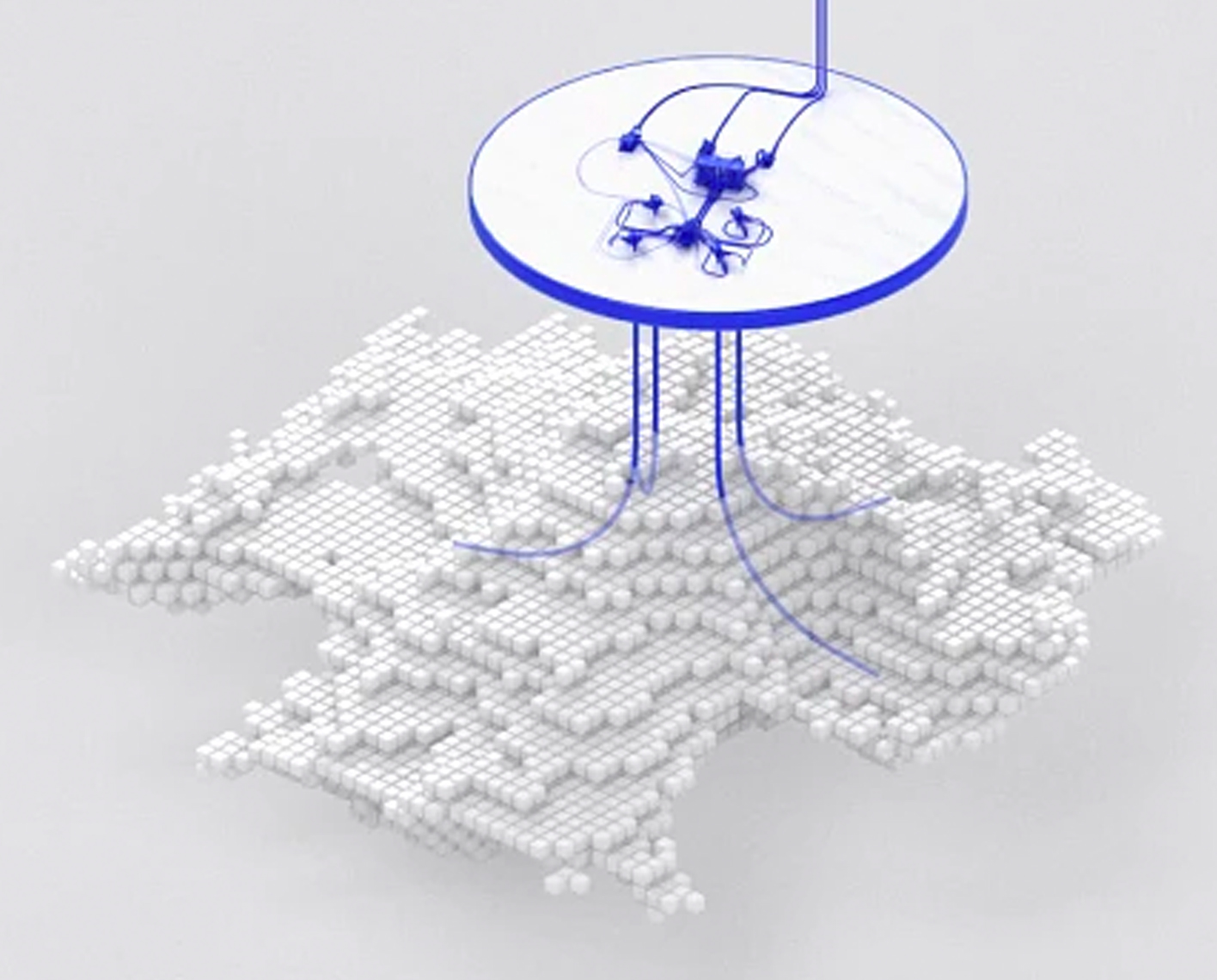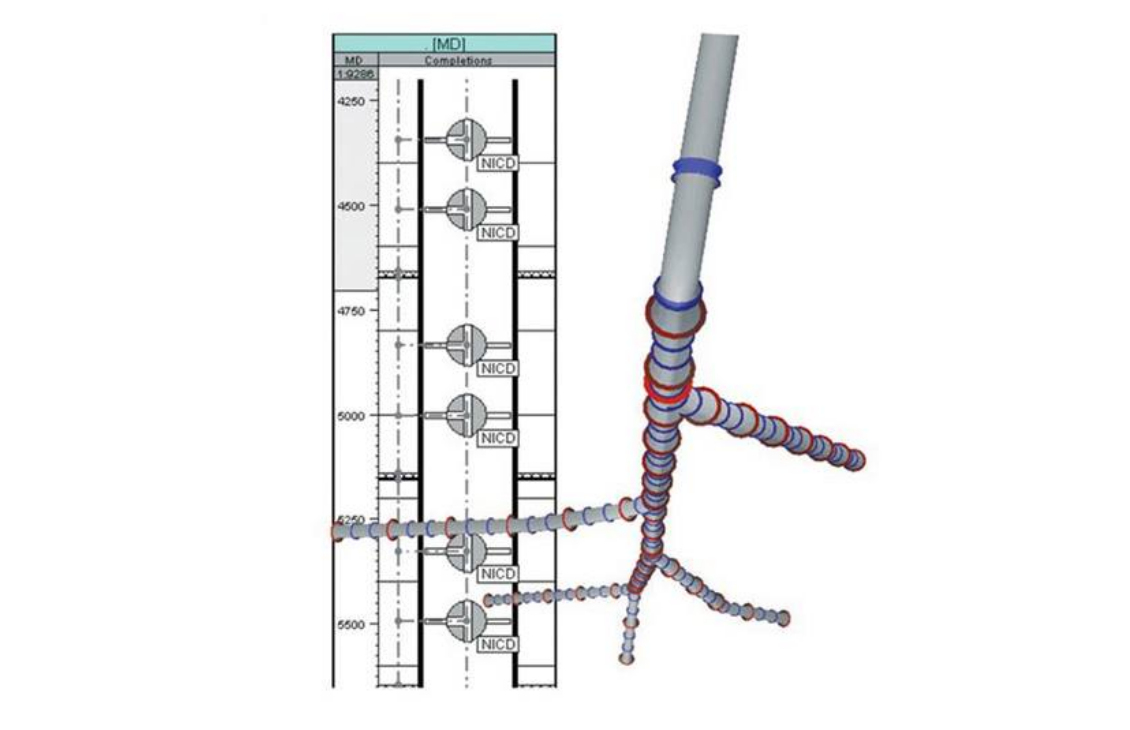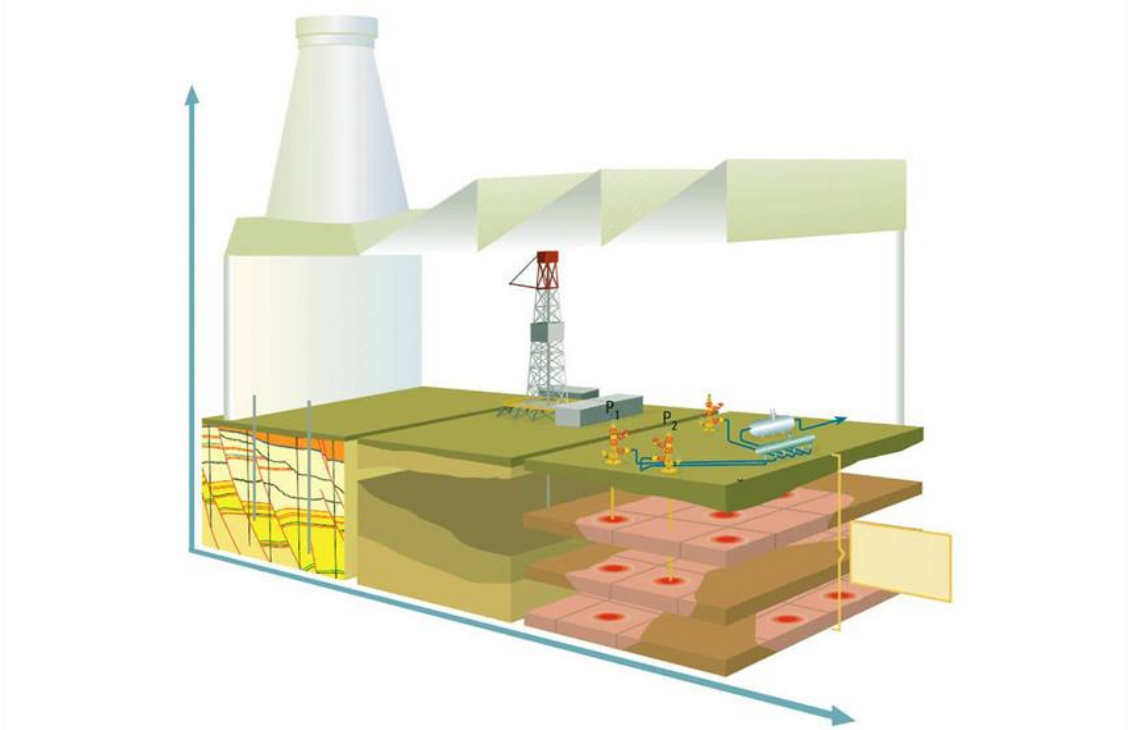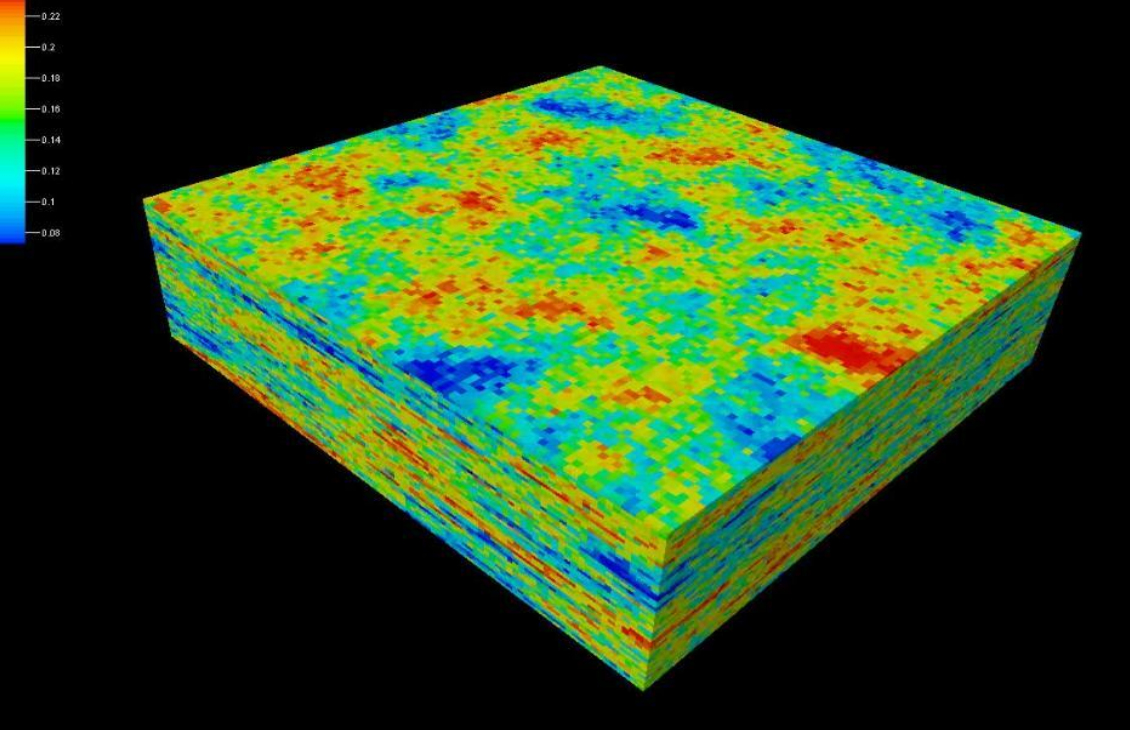Eclipse Core Simulator
Multicomponent reservoir fluid description for compositional changes associated with depth, condensates, or volatile crude oils, gas injection programs, and secondary recovery studies

The well trajectory is discretized into a series of segments that are linked together into branches.
Branches can, if required, have sub-branches.
Use of the drift-flux model or precalculated pressure drop tables can produce more accurate pressure gradients than the homogeneous flow treatment used in other well models.
The pressure gradient can vary from segment to segment throughout the well and is calculated fully implicitly in each segment using the local flowing conditions.

The number of connections to the reservoir simulation grid can vary per segment, allowing the choice between using many segments for greater accuracy or fewer segments for faster computation.
Crossflow can be modeled more realistically as the fluid mixture can vary throughout the well. Complex crossflow regimes may potentially occur in multi-lateral wells, including branch-to-branch crossflow and crossflow within individual branches.
Branches can be defined in both the annulus and the tubing and segments can be joined into looped flow paths to represent multiple contact points between the two.
Specific segments can be configured to model flow control devices, such as chokes and valves. The Eclipse simulator contains many built-in devices such as flow limiting valves, labyrinth devices, and downhole separators—other devices can be modeling by providing a pressure drop table which describes its pressure loss characteristics.
Wellbore storage effects can be modeled more accurately using the segment structure. The drift-flux model allows phases to flow in opposite directions at low flow rates so that phase redistribution within the wellbore can occur during shut-in well tests.

NExT offers a comprehensive training program to support users of the SLB software, plugins, and other software products.

Black oil, compositional, thermal, and streamline reservoir simulation.

Make more informed decisions to extract the most value from your field over its lifetime.

Simulate the full spectrum of enhanced oil recovery methods and model CO2 capture and storage projects

Control your reservoir simulation with a wide range of field management options

Model complex wells and geology

Leverage the power of high-performance computers to speed up your simulation workflows

Black oil, compositional, thermal, and streamline reservoir simulation

For heavy oil recovery, handling changes in reservoir temperature and calorific energy

Simulate coal bed methane, shale gas, shale oil, and naturally fractured reservoirs